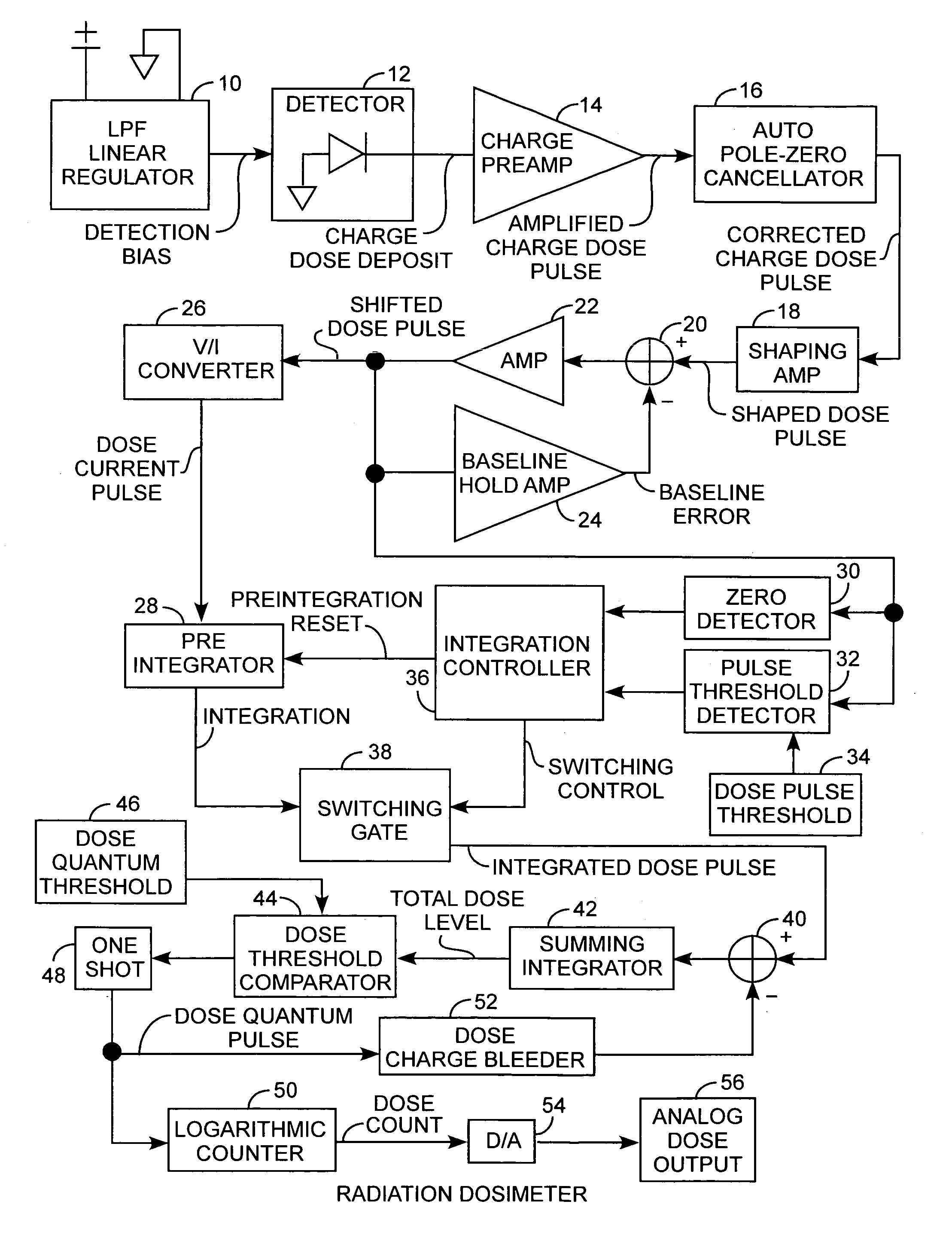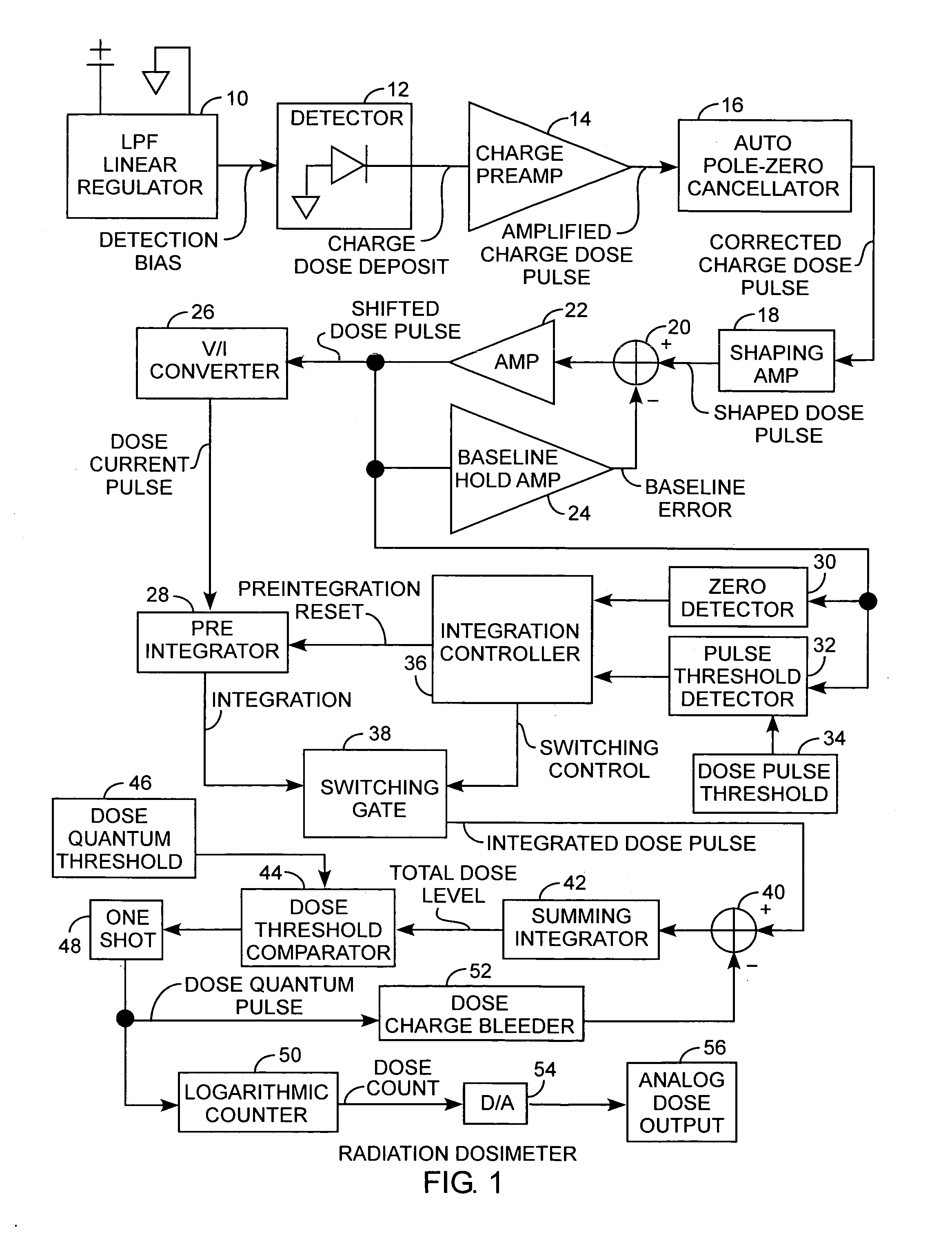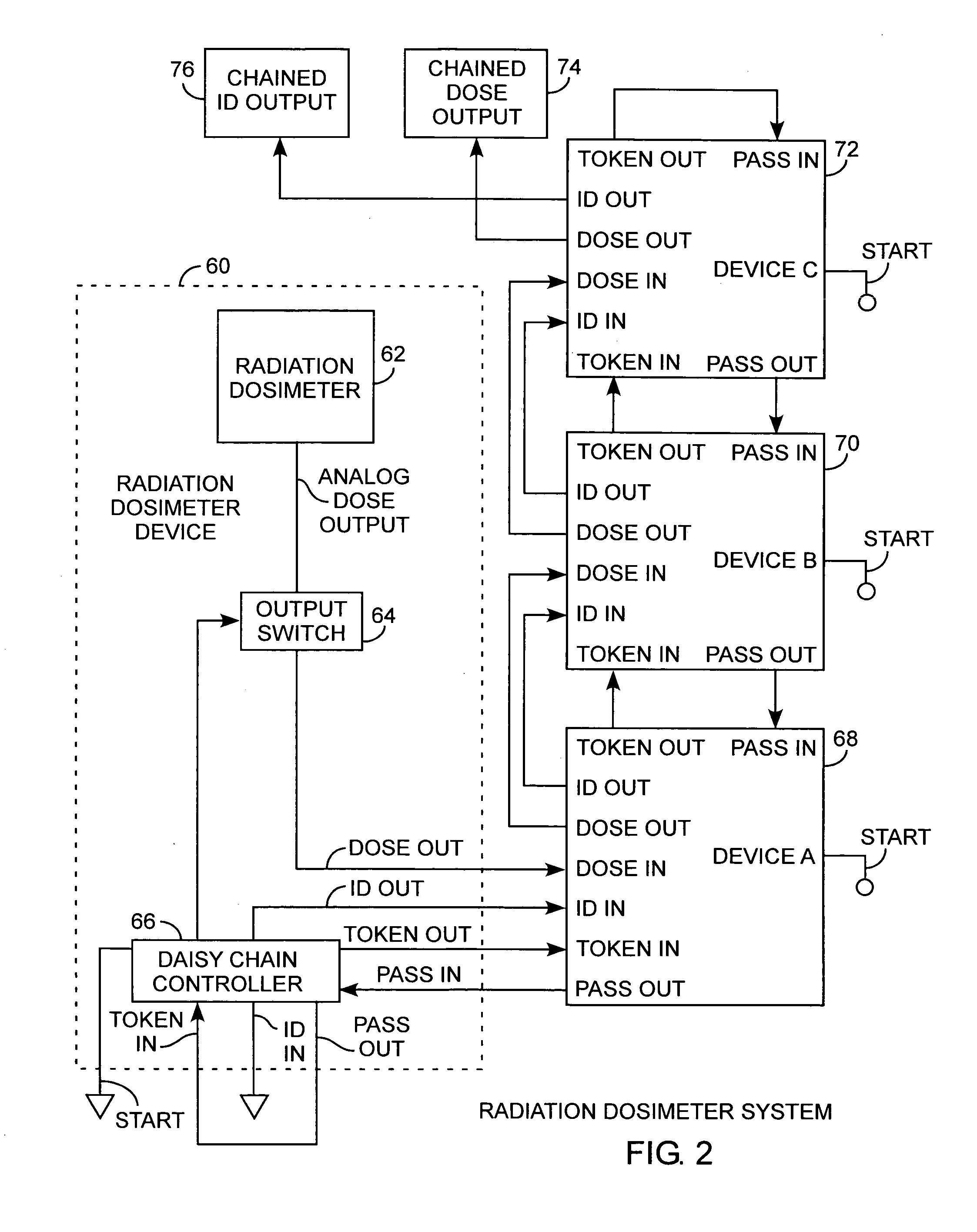Radiation dosimeter device
a technology of radiation dosimeter and dosimeter, which is applied in the direction of x/gamma/cosmic radiation measurement, radio control devices, instruments, etc., can solve the problems of significant spacecraft resources being disadvantageously required, the dosimeter weighs several pounds, and the microelectronics of spacecraft are vulnerable to degradation and even failure, so as to improve the measurement of radiation exposure and improve the effect of radiation exposure measuremen
- Summary
- Abstract
- Description
- Claims
- Application Information
AI Technical Summary
Benefits of technology
Problems solved by technology
Method used
Image
Examples
Embodiment Construction
[0025]An embodiment of the invention is described with reference to the figures using reference designations as shown in the figures. Referring to FIG. 1, a radiation dosimeter, referred to herein as the dosimeter, including a low pass filter regulator 10 receiving system power. The regulator provides a detection bias for a detector 12 providing a charge dose deposit signal to a charge preamplifier 14 that in turn, provides an amplified charge dose pulse to an auto pole-zero cancellator 16. The charge dose pulse represents a pulse of received radiation by the detector 12. The cancellator 16 provides a corrected charge dose pulse to a shaping amplifier 18 for providing a shaped dose pulse to a pulse summer 20. Each shaped dose pulse represents a defined pulse for accumulation of shaped dose pulses for accumulating total charge. The summer provides a corrected pulse to a pulse amplifier 22 that in turn provides a shifted dose pulse to a baseline hold amplifier 24 and a voltage to curr...
PUM
 Login to View More
Login to View More Abstract
Description
Claims
Application Information
 Login to View More
Login to View More - R&D
- Intellectual Property
- Life Sciences
- Materials
- Tech Scout
- Unparalleled Data Quality
- Higher Quality Content
- 60% Fewer Hallucinations
Browse by: Latest US Patents, China's latest patents, Technical Efficacy Thesaurus, Application Domain, Technology Topic, Popular Technical Reports.
© 2025 PatSnap. All rights reserved.Legal|Privacy policy|Modern Slavery Act Transparency Statement|Sitemap|About US| Contact US: help@patsnap.com



